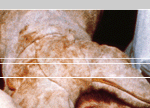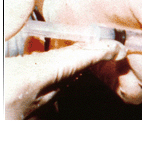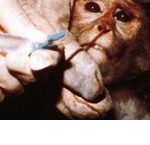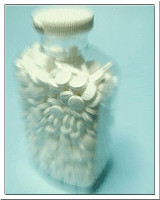Click here to go back.
THE PHARMACEUTICAL INDUSTRY
The pharmaceutical industry is a business, and like any business the top priority is profit. This misguided motivation leads to irresponsible protocol and eventually to human illness and death.
Over 205,000 new medications are marketed every year. Many of these are minor variations of older drugs, drugs that offer no new benefits, or drugs with lower success rates than their competitors. Most pharmaceuticals on the market are actually copies of other available drugs. The federal Food and Drug Administration (FDA) admits that 84% of new drugs manufactured by the biggest drug companies have little to no chance of improving patient conditions, and only 3% have been considered meaningful advances. Small wonder they inundate us with commercials telling us how we need their products.
The Public Citizens’ Health Research Group has observed the decline of FDA drug testing standards because of pressure from Congress to get medications on the market as quickly as possible.1 So when pharmaceutical companies provide animal test results suggesting a drug is safe, even if human trials or other animal species suggest otherwise, the FDA has no legal recourse to question the claim and the drug is approved. After all, prescription drugs are currently required by law to be tested on animals, any animals; they make no distinctions between species, leaving those who test drugs on animals with the power to select test results based on which species tested most favorably.
For example, while testing the antibiotic chloramphenicol researchers found that dogs and cows tolerated it well, horses didn’t, and cats died from it. So in order to get this drug on the market, researchers focused on the species that tolerated it well, and deemed it safe for human use. Chloramphenicol causes life threatening aplastic anemia in humans.2,3
This practice of favoring animal experimentation causes researchers to ignore patients’ reports of side effects in clinical studies if animal tests didn’t show the same reactions. Clearly animal experimentation is not scientific and does not assure our safety.
1. Public Citizen's "Health Letter," FDA Medical Officers Report Lower Standards Permit Dangerous Drug Approvals, Volume 15, Number 1, January 1999
2. Rich M, Ritterhoff R, Hoffmann R (December 1950). "A fatal case of aplastic anemia following chloramphenicol (chloromycetin) therapy.". Ann Intern Med 33 (6): 1459–67.
3. American Journal of Hematology, "Aplastic anemia associated with intravenous chloramphenicol" Jane B. Alavi, Volume 15 Issue 4, Pages 375 - 379








